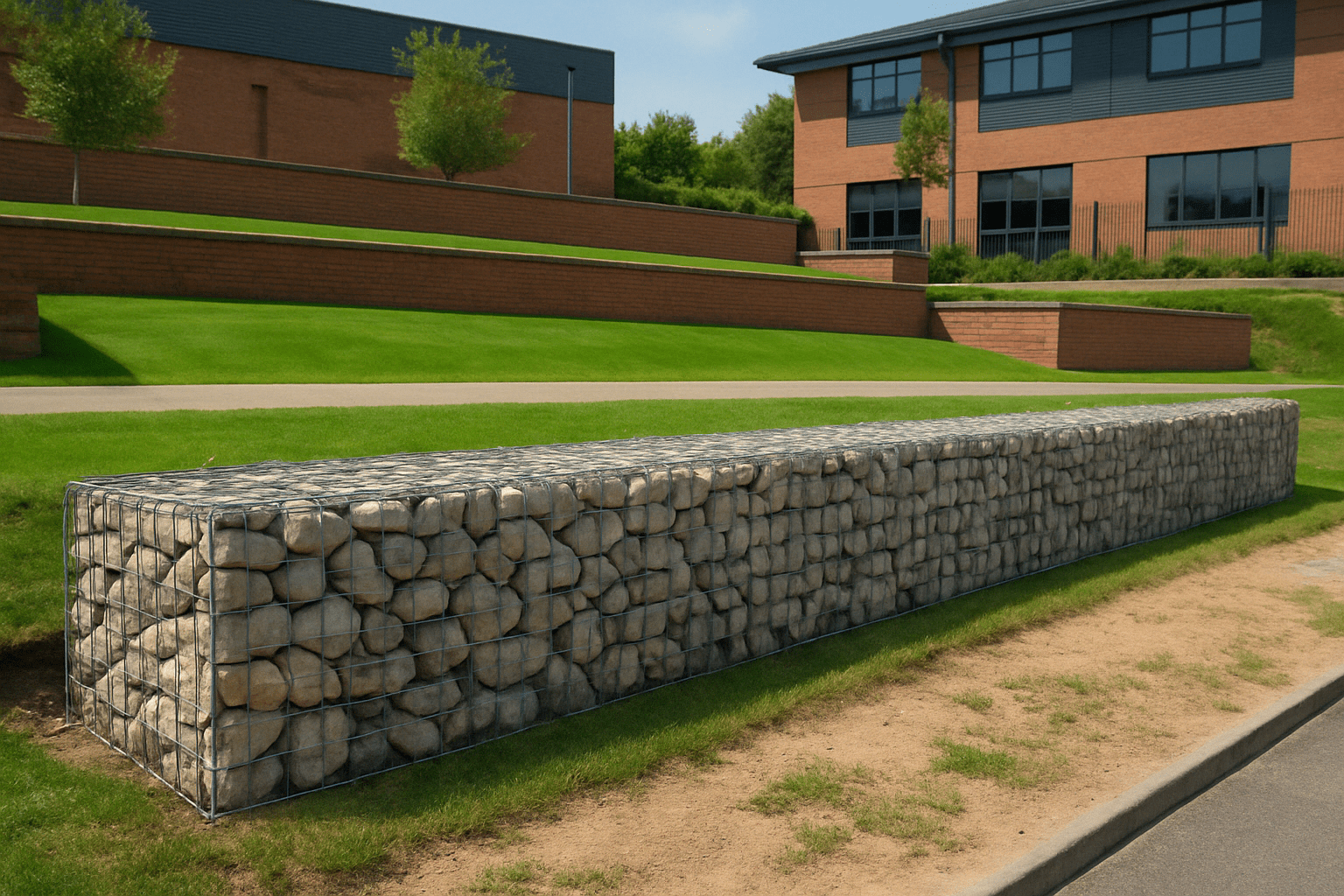Designing Retaining Walls for Business Sites: What You Need to Know
When it comes to commercial landscaping, retaining walls are more than just practical solutions for soil retention — they’re powerful design elements that shape space, create levels, and define functionality. From terraced car parks to boundary support and elevated green zones, retaining walls offer both structure and aesthetic value to business premises across the UK.
In this article, we’ll explore the essentials of designing retaining walls for commercial and public-facing sites. Whether you’re planning a new development or upgrading your existing outdoor space, understanding the design, materials, compliance, and long-term considerations is key to success.
Why Retaining Walls Matter in Commercial Settings
Retaining walls serve multiple purposes across business sites, including:
- Supporting level changes in sloped terrain
- Preventing soil erosion and landslides
- Enhancing usable space for walkways, gardens, or car parks
- Providing visual definition and architectural interest
- Safely managing water runoff with integrated drainage
In commercial environments — from retail parks and offices to hospitals and industrial estates — retaining walls must combine durability with visual appeal. They should also comply with all structural, environmental, and safety standards.
Key Design Considerations
1. Site Conditions
Every commercial site presents different challenges, such as soil type, slope gradient, surrounding infrastructure, and groundwater levels. A detailed site survey helps determine the most appropriate retaining wall system.
2. Wall Height and Load Requirements
The taller the wall, the greater the pressure behind it. If the wall will bear additional loads such as vehicles, equipment, or buildings, it must be structurally reinforced. Design must comply with building regulations and may require planning approval for walls over 1 metre high (or 2 metres in some rural settings).
3. Drainage Planning
One of the most common reasons for retaining wall failure is poor drainage. A well-designed wall should incorporate weep holes, geotextile membranes, or gravel backfill to allow water to escape and prevent hydrostatic pressure build-up.
4. Materials
From traditional masonry to concrete blocks, timber sleepers, or gabion baskets, the material chosen affects not just structural performance but also maintenance needs, lifespan, and visual character. It’s important to match materials with the purpose and appearance of the wider site.
5. Aesthetic Impact
In public-facing business environments, first impressions count. A retaining wall can double as a design feature, incorporating branding, planting pockets, or lighting — adding style as well as stability.
Choosing the Right Retaining Wall System
Here are some of the most common systems used in business site developments:
- Gravity Walls: Use their mass to resist pressure — ideal for low walls and where heavy materials like concrete or stone are preferred.
- Cantilever Walls: Reinforced with concrete and steel, these are suitable for taller walls and heavier loads.
- Gabion Baskets: Wire mesh cages filled with stone, providing flexibility and permeability. Perfect for eco-conscious sites and water-adjacent areas.
- Modular Block Walls: Interlocking units allow for faster installation with a consistent finish. Popular for landscaping zones and urban settings.
Sustainable Design Opportunities
Retaining walls also offer sustainability benefits. Choosing locally-sourced materials, using recycled aggregates, and integrating green planting features into wall faces can significantly reduce the environmental impact of your project.
In addition, gabion baskets are an eco-friendly choice. Their ability to absorb water and allow natural vegetation growth makes them ideal for environmentally sensitive or flood-prone sites.
Maintenance & Longevity
A properly designed retaining wall requires minimal maintenance, but longevity depends on correct installation and timely inspections. Key maintenance tasks include:
- Clearing drainage outlets
- Checking for wall movement or cracking
- Replacing dislodged or damaged elements
- Managing plant growth and root systems near the structure
Gabion walls, for example, may eventually require basket refilling or wire tightening over many years, particularly if subjected to heavy rainfall or freeze-thaw cycles.
Frequently Asked Questions
Do I need planning permission for a retaining wall?
If the wall exceeds certain heights or is located near highways or boundaries, planning permission and building control approval may be required. Always consult your local authority or a professional contractor.
What’s the best retaining wall for a sloping commercial car park?
Cantilever or reinforced gravity walls are commonly used for car parks, as they can handle high loads and frequent use. Modular blocks are also popular for aesthetics and easy installation.
Can I use retaining walls for planting?
Yes. Many retaining wall systems are compatible with planting schemes. You can incorporate planter terraces, green walls, or flower beds to enhance visual appeal and support biodiversity.
Conclusion
Designing retaining walls for business sites isn’t just about holding back earth — it’s about creating usable, attractive, and compliant landscapes that serve both practical and aesthetic goals. With careful planning, quality materials, and expert installation, retaining walls can add long-lasting value to your commercial property.
If you’re planning a project that involves level changes or needs erosion control, a well-designed retaining structure is essential. Speak to a contractor with experience in commercial-grade retaining solutions and a proven track record in hard landscaping.









